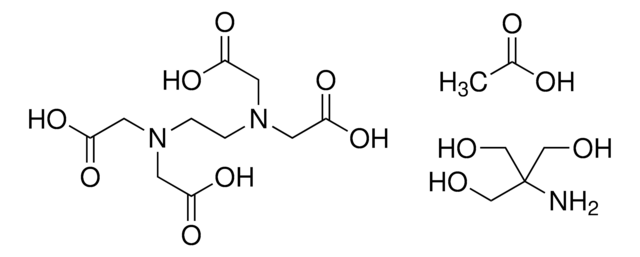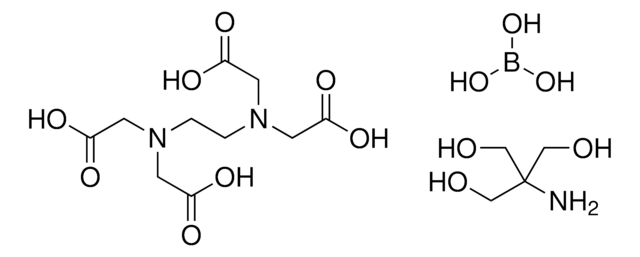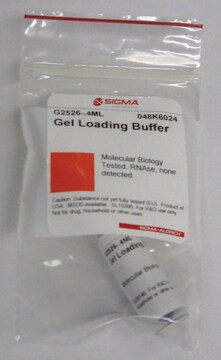T6025
Tris Acetate-EDTA buffer
BioReagent, suitable for electrophoresis
Synonym(s):
TAE buffer
About This Item
Recommended Products
sterility
0.2 μm filtered
Quality Level
product line
BioReagent
form
working solution
technique(s)
electrophoresis: suitable
impurities
DNase, RNase, Protease, none detected
suitability
suitable for electrophoresis
suitable for gel electrophoresis (after dilution to working concentration)
application(s)
diagnostic assay manufacturing
SMILES string
CC(O)=O.NC(CO)(CO)CO.OC(=O)CN(CCN(CC(O)=O)CC(O)=O)CC(O)=O
InChI
1S/C10H16N2O8.C4H11NO3.C2H4O2/c13-7(14)3-11(4-8(15)16)1-2-12(5-9(17)18)6-10(19)20;5-4(1-6,2-7)3-8;1-2(3)4/h1-6H2,(H,13,14)(H,15,16)(H,17,18)(H,19,20);6-8H,1-3,5H2;1H3,(H,3,4)
InChI key
HGEVZDLYZYVYHD-UHFFFAOYSA-N
Looking for similar products? Visit Product Comparison Guide
Related Categories
Application
Other Notes
Preparation Note
Storage Class Code
12 - Non Combustible Liquids
WGK
WGK 2
Flash Point(F)
Not applicable
Flash Point(C)
Not applicable
Personal Protective Equipment
Choose from one of the most recent versions:
Already Own This Product?
Find documentation for the products that you have recently purchased in the Document Library.
Customers Also Viewed
Our team of scientists has experience in all areas of research including Life Science, Material Science, Chemical Synthesis, Chromatography, Analytical and many others.
Contact Technical Service







